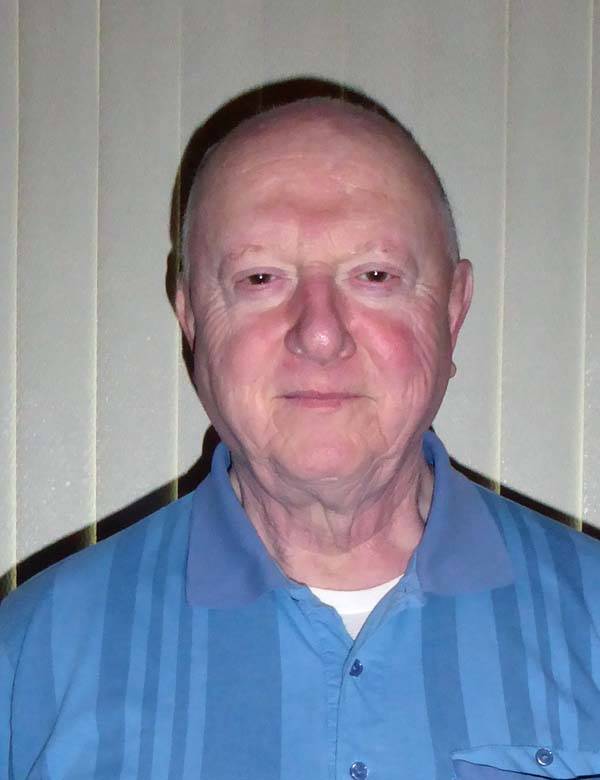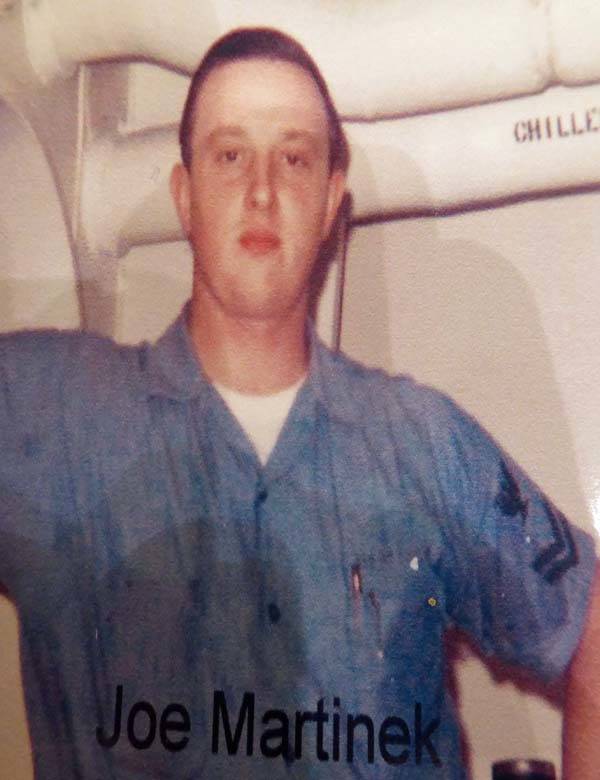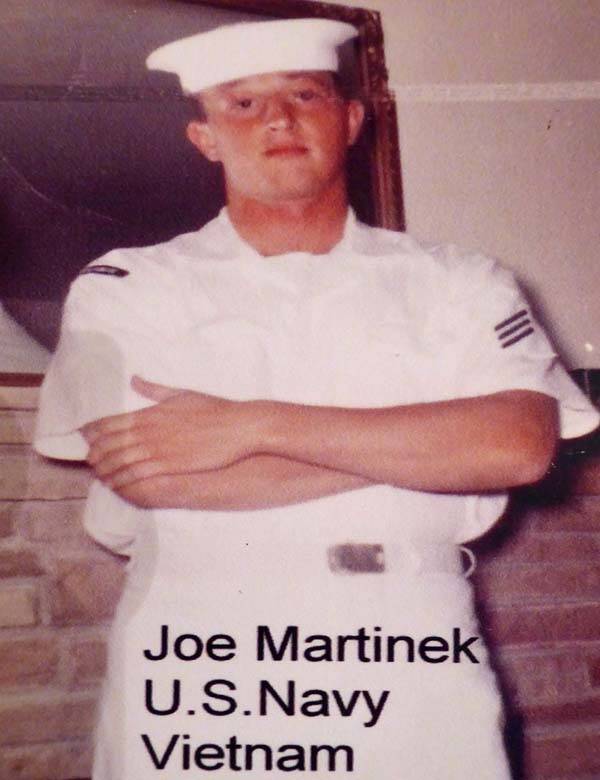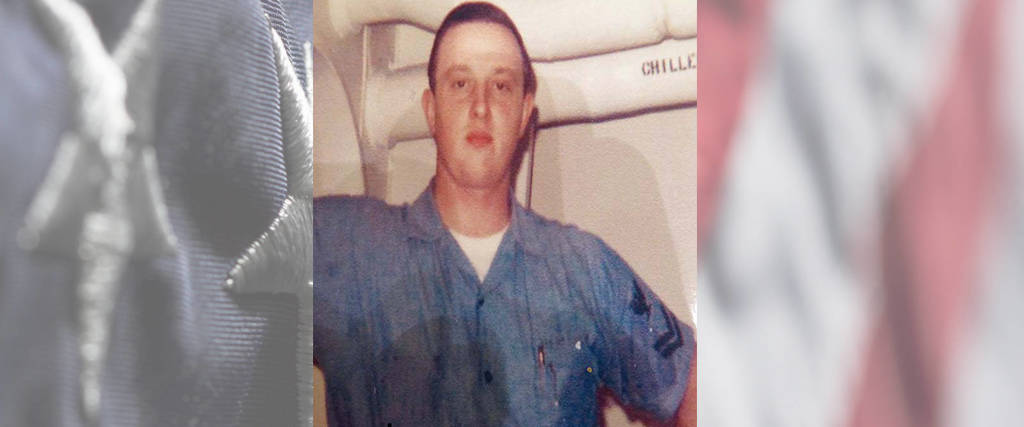U.S. Navy Vietnam War Crest Hill, IL Flight date: August, 2019
By Nancy Angel, Honor Flight Chicago Veteran Interviews Volunteer

When Joseph Martinek was 21-years-old in 1965, he decided to drop out of the University of Illinois, which automatically changed his classification for the draft to 1A. He knew he didn’t want to be in the Army or the Marines. So on September 12, 1965, he enlisted in the Navy, following in the footsteps of his grandfather who had served in the Navy in 1910. Joe was sent to Great Lakes for a nine-week shortened Basic Training. They did a lot of physical training including marching and swimming. They also learned about military history and how to operate certain rifles, but very little about life on a ship. Upon completion, Joe was promoted directly from E1 to E3 because he had a two-year associate’s degree.
Joe’s initial assignment was to the USS Harry E. Hubbard,(DD-748), a World War II era destroyer based out of Long Beach, California. The Hubbard was out at sea, so Joe was put on a tanker, the USS Natchez (PF-2), where he slept on a cot on the main deck for a week. When they met up with the Hubbard, he was high-lined over to his ship. High-lining is the method used for transferring supplies, mail and men between ships while at sea. The two ships get 40 or 50 feet apart and travel at the same speed. A line is shot from one ship to the other with a shotgun-like mechanism, and then hooked up with a block and tackle. It takes about 12 men on each side manning ropes and keeping lines taut. The sailor is then strapped into a boatswain’s chair and transported on a sometimes harrowing ride. Despite the efforts to keep the ships at a consistent distance, there was often a slackening of the line due to rough seas, and the sailor would dip closer to the shark-infested waters.

The Hubbard was a destroyer with about 320 men on board. It was a relatively small ship and on open, rough waters the ship would list up to 40 degrees and waves often crashed over the deck. Joe says you learned early to avoid seasickness. Stationed in the South China Sea off Quang Ngai, near the DMZ, the Hubbard provided gunfire support, usually for the Marines. This entailed firing shells over a distance of about 4 or 5 miles to locations that were radioed in. This went on for up to two days at a time and spotter planes radioed feedback about whether they hit their targets. There were three gun mounts on the ship with two guns on each mount and about twelve people working each gun. There was a gun captain in charge of the mount who confirmed the firing, a projectile man, a powder man and a casement man. There were also men below deck preparing the gun powder and shells and placing them on the hoist. Joe helped load 5-inch diameter shells weighing about 56 pounds into the guns, which he said helped him maintain his arm strength. He was later assigned as the fuse /site setter on the gun mount. He sat on a stool between the two guns and aligned two dials for accuracy before firing. The targets were actually set and guns were fired from an electronic gun director that was not on the mount itself. Joe found it remarkable that the shells they were firing were made in 1944 and had been in storage for 20 years. Not one misfired. Joe was also assigned to the deck division, so when the Hubbard was not engaged in gunfire, he helped with maintenance on the ship, which included a lot of scraping paint and painting. The men rotated through 4-hour watch shifts on the bridge during which they steered the ship and controlled its speed under orders from an officer on deck.
After nine months on the Hubbard, Joe was sent back for schooling to become a Gunner’s Mate Technician (GMT) maintaining nuclear weapons. He was at Great Lakes for eight weeks and Albuquerque, New Mexico, for 10 weeks. Joe was then assigned to Yorktown Naval Weapons Station in Virginia, maintaining and retrofitting ships that came in. He enjoyed actually working in the field in which he had been trained. He was on a shore base and basically working a 9-to-5 job like in a factory. Another benefit was that he had an advantage in passing tests for advancement, since the knowledge and skills being tested were reinforced by practice every day. During his year of shore duty, he passed exams for promotion to both E4 and E5, and was a Second Class Petty Officer when he moved on to his next assignment, the USS Enterprise (CVN-65).

The Enterprise was the first nuclear powered aircraft carrier and was like a luxury cruise ship compared to the Hubbard. It was much larger, much more modern, had better food and more plentiful water. There were about 5,600 people aboard, with about 2,000 air wing and the remainder ship’s company. Life on the Enterprise was physically much easier than on the Hubbard, but to Joe’s disappointment, he was no longer using his training. He was a nuclear weapons technician, so his job was maintaining and performing regular testing of nuclear weapons on the ship. In reality, there were not many nuclear weapons, so this didn’t occupy a great deal of time. The majority of his time was working on an assembly line building 500 pound conventional bombs for the sorties going on their missions.
After about a week of training, Joe was assigned to be the Damage Control Petty Officer. He was now responsible for inspecting fire extinguishers, fire hoses, valves and controls to make sure that everything was ready for any emergency. He submitted reports every couple of weeks to the damage control assistant, an executive officer. When Joe was going on leave for about two weeks, he trained someone else to fill in for his duties. When Joe returned, he was immediately summoned to the executive officer’s office. Joe was not sure what the issue might be when he reported to Commander Davis. As it turned out, the “XO” (executive officer that is second-in-command) had conducted a surprise inspection and found that someone had carelessly hung a jacket over one of the fire extinguishers and the extinguisher was not inspected, posing a significant safety hazard. It was Joe’s responsibility, even though he wasn’t there. The officer calmly explained the situation and the ramifications to Joe in detail, never once raising his voice. Joe learned that you can delegate authority but not your responsibility. Even though he was reprimanded, it was a positive experience for Joe. Commander Davis’ professionalism exemplified how an officer should conduct himself. For Joe, this was a great lesson in management and leadership that stuck with him throughout his own career.
Another memorable experience on the Enterprise was a tragic fire that occurred on January 14, 1969, during a training exercise. An airplane was backing up on the flight deck when the hot exhaust got too close to a rocket, setting off an explosion. With so much ammunition and fuel on the flight deck, widespread burning fuel and chain reaction explosions occurred quickly. Ultimately, 18 bombs detonated, 15 aircraft were destroyed, 28 men were killed and 343 were injured; there was $20 million in damage to the ship. When the fire started, General Quarters was sounded, and everyone had to man their battle stations. Joe was below deck at the time, so he didn’t witness the fire, but saw the terrible aftermath. Had it occurred a few minutes later, he may have been right in the middle of it, since he had been scheduled to be the safety observer for the training exercise. The Enterprise and its crew spent two months in Pearl Harbor for the repair of the ship. Joe went back to sea once more before his discharge in San Francisco in 1969.
Joe briefly attended Roosevelt University and then worked as a lab technician for Sunbeam. In 1971, he took the firefighter’s exam and joined the LaGrange Fire Department where he remained for 21 years. He became a training officer; during that time he also completed a degree in Fire Sciences, courtesy of the VA. In 1971, he also married Lynn. They have one son, two grandchildren and one great-grandchild. Joe retired at age 50, then worked as the training coordinator for the Pleasantview Fire Protection District. Certainly his experiences in the Navy influenced his career, from his training in fire safety to his lessons in leadership.
Today, Joe is most passionate about his membership in Toastmasters International of which he has been a member since 1999. Through many speeches and leadership activities, he has achieved Distinguished Toastmaster status. He enjoys the meetings and the many accomplished, interesting people he meets through the organization.



